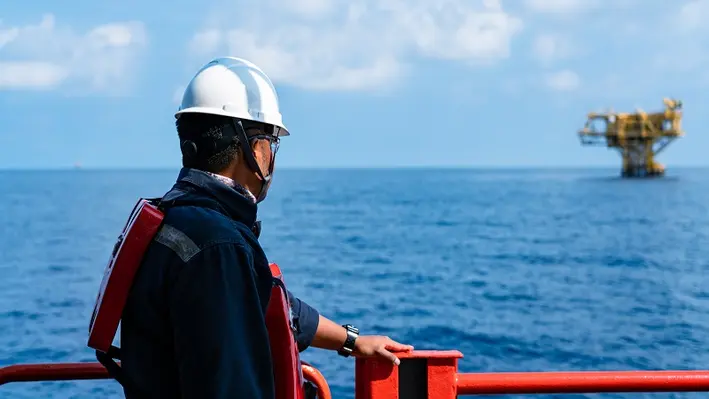
Serica Energy has provided an organisation and operations update, charting the successful operations it has carried out in the North Sea since September.
The latter half of 2023 has seen Serica successfully carry out the summer shutdowns at both the Bruce and Triton fields. In the former, the shutdown workscope was completed later than planned due to the decision to carry out permanent rather than temporary repairs on the flare tower.
Strong levels of production have been established from both the Bruce and Rhum fields with Serica’s average production entitlement being over 24,000 boe per day during the last four weeks.
Commencing in September, Serica has been conducting its second Light Well Intervention Vessel (LWIV) campaign on the Bruce field. This has involved successfully re-entering three wells to identify areas of scale build-up, perform water shut offs and perforate target intervals. With work on one well still to finish, there has been an uplift in overall production from the re-entered wells of about 2,500 boe per day so far.
Serica has now intervened on five of the subsea wells that form the Western Area Development (WAD) part of the Bruce complex. Since taking over operatorship, Serica has also re-entered fourteen Bruce platform wells. The results have demonstrated the benefits of low cost well interventions and a third LWIV campaign is planned during 2024 which will involve work on both Bruce and Keith wells. The inventory of platform wells on the Bruce field is also being high graded for potential future interventions.
The company is also currently carrying out vessel-based final abandonments of four exploration and appraisal wells on the Keith field and the North Eigg exploration well. This campaign is consistent with the NSTA’s initiative to reduce the number of suspended inactive wells in the UK North Sea. The abandonments are scheduled to be completed in late December 2023.
At Triton, the summer shutdown was completed in September 2023 with the activities carried out including essential fabric maintenance and inspections, a further phase of the control systems upgrade and preparation for the reinstatement of water injection on the Bittern field, which is planned to restart in early 2024. Good production rates are being achieved from all of Serica’s fields in the Triton Area.
During the middle of this year, a rig-based well intervention campaign was carried out on the Guillemot West and North West fields. These were the first such interventions on the fields in over ten years and have resulted in incremental gross daily production of about 1,500 barrels of oil from one well and 12 million cubic feet of gas from another, both of which had been shut-in for lengthy periods.
Mitch Flegg, Chief Executive of Serica, explained, “I am pleased to report the successful conclusion of the planned summer shutdowns on Serica’s Bruce and Triton hubs and the re-establishment of strong levels of production at both. During the last month Serica has been consistently achieving production rates in excess of 50,000 boe per day. Overall production guidance for the year is unchanged reflecting delayed production restarts and slower than expected production ramp-ups after the summer shutdowns.
“I am also pleased to report successful well campaigns on the Bruce and Guillemot fields during 2023. These are further proof of the benefits to be had from low cost, short cycle investments in our existing asset portfolio. The full impact on production of the well work carried out this year is expected to be felt in 2024, aided by the work on the Bruce facilities deferring the need for another major shutdown until 2025.
“The LWIV vessel used on Bruce is already booked for a third campaign in 2024, which will target wells on both the Bruce and Keith fields. We are also looking forward to the start of a four well drilling campaign in the Triton area, with the first well on the Bittern field scheduled to begin around the middle of the first quarter. 2024 is anticipated to be a very busy and impactful year of investments in Serica's North Sea portfolio.”
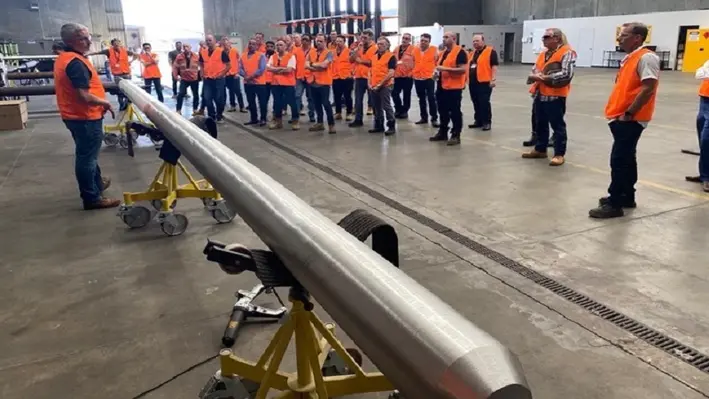

BiSN, a provider of permanent downhole sealing solutions, has opened a manufacturing facility in Perth, Australia in order to increase its operational capacity in the Asia-Pacific region as well as creating several local jobs.
The decision to make the investment was driven by the growing demand for Wel-lok technology in the region. According to Paul Carragher, founder and CEO of the company, it is another step in its global expansion and builds on successful campaigns with operators in Australia and the wider region. Carragher added, “The Perth facility is one part of our commitment to rapidly support operators, allowing them to deploy Wel-lok technology for all intervention and P&A sealing applications.”
The Perth facility features full heater and bismuth-based alloy production, two major components of Wel-lok technology, as well as final assembly. It also provides a focus for regional business development and a field operations base. It will also boast a demonstration room to allow operators to view and get hands-on with Wel-lok and other technologies offered by BiSN. This will facilitate a collaborative environment for planning P&A, intervention and completion solutions.
The opening of the facility will remove the barrier of lead times due to shipping from the US or UK which can be prohibitive for operators and their intervention needs. “By opening a facility in Perth, it allows us to be more responsive to the needs of operators in Australia,” said Adrian Weiss, BiSN Senior Vice President of Operations. “The new facility is a continuation of BiSN’s commitment to increasing our global capability. We have listened to our clients in this region, and we are responding to help them seal safer and protect forever.”
The announcement follows the appointment of a new Regional Business Development Advisor in the Australian city, revealed earlier this year. Andy Vigor, the new appointment, boasts extensive experience in the industry having held roles in the Middle East and Asia Pacific regions. Now with BiSN, he is supporting customers both in Australasia and throughout the wider region.
Vigor surmised, “With the geographical size of the Australasia and the Asia Pacific region, response time and the ever-increasing cost of logistics is critical to our customers. We can now provide customized, engineered products and solutions locally, which will assist BiSN in its efforts to achieve service excellence for all of our regional customers.”
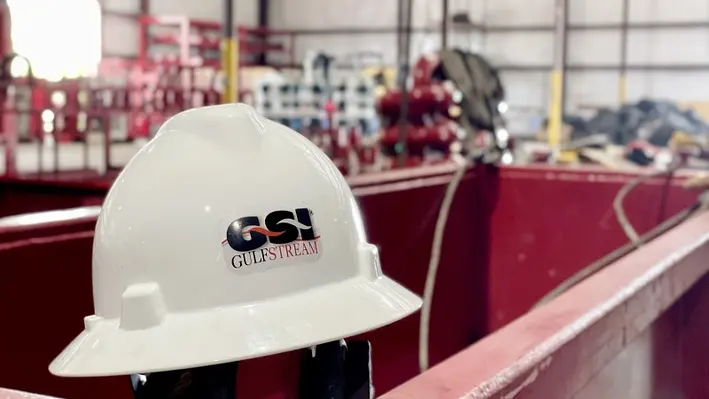

Gulfstream Services Inc. (GSI), an oilfield rental services company, has formed a partnership with Kontinental Energy Services (KES) to provide rental tool equipment and services for jobs in the African oil and gas industry.
Bobby Bond, GSI Chief Executive Officer, remarked, “We are excited about being aligned with the management of KES and bringing quality equipment and solutions to the African continent. Our 45 years of industry experience, solid reputation and solutions-based approach is something we feel will ensure our success going forward.”
The partnership will facilitate a more robust approach for providing the right tools to get jobs completed to the highest level of quality, safety and performance for energy services companies and international, major, national and independent oil and gas companies across the continent.
Bond added, “We believe the growth potential in the Eastern Hemisphere will be robust for many years. This partnership, along with our recent expansions into Asia Pacific and the Middle East show our commitment to this part of the world.”
The suite of rental tools and equipment include (but not limited to):
• A complete line of high-pressure standard services, H2S Services Chiksan Equipment;
• Low pressure piping and hoses;
• Cargo boxes, baskets and custom designed racks for operators and services companies;
• Restraint system to restrict movement of temporary flow iron in the event of an unplanned release of pressure;
• Full-service 3rd party iron management programme that helps keep customer-owned asset pumping at peak performance;
• Cementing, coil-tubing; HWO and flowback support packages;
• Spool & gate valves.
KES and GSI are also planning to build workstation hubs in Africa for proactive maintenance of equipment and training of all service technicians in respective countries. The first of these will be built in Congo/Angola and will support activities in the nations as well as in Namibia, South Africa, Gabon and Equatorial Guinea.
"We are confident in the partnership with KES to expand our footprint in Africa, and we anticipate GSI to bring much innovation and technology to service operators throughout those areas with our full array of rental services and equipment," concluded Bond.



An enormous congratulations to the OWI Global Awards 2023 winners who were crowned in Aberdeen last week during a night filled with fun, food and festivities, where the offshore well intervention community gathered to cap the year of with a bang!
At the annual celebration, a panel of expert judges acknowledged the very best in global well intervention excellence and were tasked with picking out the best from a competitive field of submissions. However, for going above and beyond, there were some who stood out slightly higher from the crowd and were recognised for their achievements.

The winners for 2023 included:
Intervention Champion of the Year: Expro, for taking the crown after celebrating 40 years of its Subsea Test Tree Assemblies operations, delivering more than 3,000 deployments in subsea Exploration and Appraisal completion and intervention applications, and expanding its capabilities to offer a complete subsea well access portfolio!
Energy Transition Pioneer of the Year: Expro, for pioneering to the top with its 50-year legacy supporting the UK oil and gas industry and, last year, investing more than 50% of its development budget into lowering clients’ carbon emissions!
Best Example of Diversity and Inclusion: TechnipFMC, after being names one of the World’s Top 400 Female-Friendly Companies by Forbes and participating in a full roster of events aimed at supporting inclusion in every form!
Best Example of Subsea Intervention: Welltec, after demonstrating huge success with its ultra-slim e-line intervention tools last year!
Best Example of Platform Intervention: 3M, for its impressive achievement in helping to deliver successful sand control remediation through coil tubing deployment to allow the asset to achieve production goals!
Best Example of Downhole Innovation: DarkVision, claiming the top spot for its HADES downhole inspection platform that provides a comprehensive evaluation of the entire well in 3D in a single pass!
Market Intelligence Platform of the Year: Energy Industries Council, as one of the world’s largest energy trade associations for companies to supply goods and services to energy industries worldwide since 1943!
Best Project Outcome: TechnipFMC, securing the accolade with its successful RWLI campaign in ultra-deepwater Angola which included water shut-off and acid stimulation operations for three wells in just 27 days!
Best Example of Collaboration: WellBarrier – a SLB technology & Equinor. The WellBarrier solution was successfully deployed at scale across Equinor’s organisation in support of replacing manual tasks with digital solutions. This solution is estimated to have engineering effort savings of around 10,000 hours during the first year.
Best Example of Digital Innovation: Evoilve, for the excellent work that has come from Evoilve’s COLLABWELLS Well Integrity Management software which has ushered in a new era of efficiency, collaboration and automation within the oil and gas industry.
Best Example of Well Integrity Innovation: EV, prevailing as champion through its award-winning innovation that is the world’s only integrated array video and phased array ultrasound scanning tool.
Best Example of Decom Innovation: Oceaneering, which took home the crown for designing, building and operating an ROV-based annular access methodology based on multi-string hot tapping to mitigate against annular gas and avoid HSE risk in a wellhead severance campaign for a major operator in Southeast Asia.
OWI Global Awards: Significant Contribution to the Industry: Jørgen Hallundbæk, accepted by Cristian Kruger. After our community bid a sad farewell to an individual who has contributed so much towards its progression, the final iteration of this award was presented to Jørgen Hallundbæk, a worthy winner whose legacy will continue to shine through his formidable work and family and friends. To honour his impact, this year saw the first presentation of the ‘Jørgen Hallundbæk Lifetime Achievement’ award which will continue to honour visionaries within the industry.
Jørgen Hallundbæk Lifetime Achievement: Tom Brighton, claiming the prestigious accolade for his 37 years of service and dedication. With an unrivalled portfolio, Tom Brighton has imparted the best practice methods and increased operation standards to the well discipline across the globe and was a worthy winner of the new award!
Thank you to everyone for attending and we look forward to another year of seeing our network push the boundaries of engineering excellence and driving the wider offshore community forward!

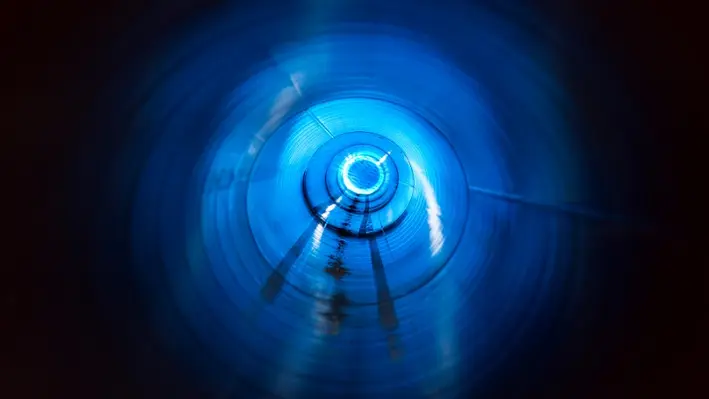

Harbour Energy, the operator of the Viking CCS CO2 transportation and storage network, has announced that the Planning Inspectorate has accepted for examination its application to build the Viking CCS onshore CO2 transportation pipeline in the UK.
The 55 km pipeline will transport captured CO2 from the Immingham industrial area to the former Theddlethorpe Gas Terminal site. From there, it will be sent to the depleted Viking gas fields, located 2.7 km under the seabed for permanent storage.
The pipeline is considered a key component to decarbonise and rejuvenate the industries of the Humber, potentially unlocking UK£7bn of investment across the full CO2 capture, transport and storage value chain over the next decade. The acceptance by the Planning Inspectorate is the next stage in the process to acquiring a Development Consent Order (DCO) for the pipeline and follows a comprehensive programme of consultation and engagement with local communities and stakeholders.
“This is another critical step forward towards delivering our Viking CCS project, which will create thousands of jobs in the Humber region and is targeting 10 million tonnes per annum of CO2 emissions reduction by 2030, vital for the UK to deliver its climate ambitions,” remarked Viking CCS Project Director Graeme Davies.
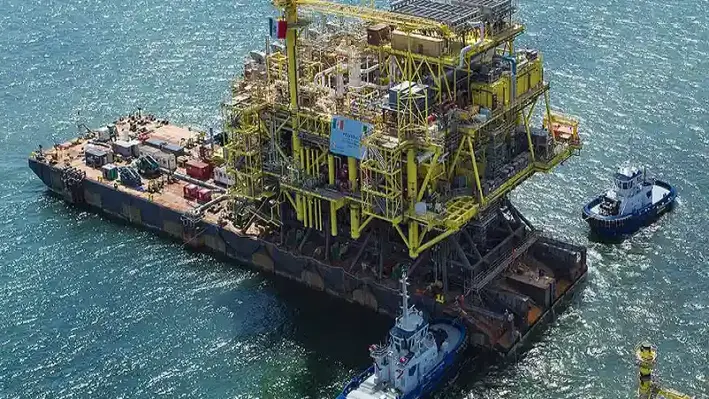

McDermott, a fully-integrated provider of engineering and construction solutions to the energy industry, has been awarded an engineering, procurement, removal and disposal contract by Santos for the full removal and disposal of the Campbell platform structure.
The platform is part of the Varanus Island Hub offshore Western Australia. McDermott has agreed to provide project management and engineering services for the removal and transportation of the platform topsides, structure and associated items to an onshore facility. There to be dismantled and disposed.
Mahesh Swaminathan, McDermott's Senior Vice President, Subsea and Floating Facilities, remarked, “Our successful, proven track record of project delivery spans the entire energy value chain. This decommissioning award reflects the commitment we share with Santos to timely, safe, and environmentally responsible removal of infrastructure at the end of its operational life cycle. We look forward to continuing to be part of delivering their sustainability commitments while also contributing to the circular economy for a lower carbon future.”
The contract is regarded as ‘sizeable’ by McDermott, being between US$1mn and US$50mn. The project management and engineering will be conducted by the company’s team in Perth with support from Indonesia and Malaysia. It represents the fourth decommissioning contract executed by McDermott in the country in the last two years.
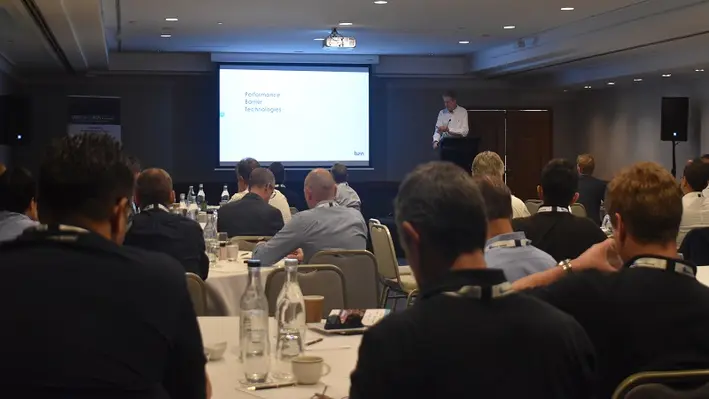

The Offshore Well Intervention Australia 2023 Conference was carried out earlier this month as a host of industry experts and key stakeholders in the offshore community arrived in Perth for two days of engrossing seminars, presentations, panel discussion and (of course) extensive networking.
There were many highlights from the conference which provided an extensive ranging of talking points for those in attendance. A presentation by a NOPSEMA representative was an early point of interest which provided an insight into where the Australian regulator saw gaps in technology within the industry and what are the requirements for bringing new technology into the fold.
Attendees were also invited to hear how ExxonMobil has been creating a culture of innovation and improvement, where biases can be challenged and leadership teams are more receptive to new ideas. The ExxonMobil presenter noted and reviewed why this culture is so important and how it can help in upcoming campaigns as every participant’s ideas are valued, allowing for the continuous development of techniques and ideas to complete projects efficiently and effectively.
Then, in a memorable panel discussion that was described by a later presenter as one of the most memorable on the subject he had ever seen, participants from CCS Energy, NOPSEMA, Asia Pacific Energy Solutions and CO2Tech sat down to provide their thoughts on the CCS market in Australia. In the session, the speakers provided a detailed insight into the challenges and opportunities posed by the CCS market in the region, what are the advantages and disadvantages of repurposing ageing wells for CO2 storage, and how regulatory pressures are shaping the environment. Read more about what was said in the session here: https://offsnet.com/content/australia/meeting-emission-reduction-targets-through-ccs
Stringing the two days together was a myriad of presentations from technology providers and service providers outlining how their solutions were ready to support Australia’s offshore community for its well intervention requirements. In this vein, on the exhibition floor stood the likes of TAM International, Oilenco, Impact Selector and WELLVENE ready to display their wares to the gathered delegates. The onsite representatives provided some thoughts to Offshore Network on how their organisation was perceiving the Australian market:
Alastair McGregor, Business Development Manager at TAM International, remarked, “For Australia I think there's a lot of potential growth. The legislative, government and regulatory bodies have perhaps worked against themselves somewhat and lobbyists have perhaps been able to derail some projects that actually didn't have a lot of risk but were perceived as high risk.
“However, we have definitely seen a massive uptick in the whole P&A space but also routine well intervention here. P&A is definitely a major part of what we do and plugs and packers are integral to some of the operations around P&A. We are also seeing a bit of an uptick in people understanding how to apply them in the drilling phase as well. But, overall, P&A is definitely a large scope of what we do and is a large area of growth for us here.
“We've attended a few OWI AUS now and this one has certainly been very engaging with regards to the attendees; people definitely want to connect and learn a bit more about each other. We like to participate at events like this because it allows us to talk to more people and engage with them individually. There has definitely been a lot of interest in having those conversations during this event and I think we have at least four or five new leads from this conference.”
Colin Mackie, Country Manager at WELLVENE, said, “The main changes over the last six years for our company in Australia has been utilisation of equipment that is tried and tested in remedial intervention and utilising them in the P&A space. There has been more focus from operators on robust barriers and making efficiencies in deploying those barriers, which is where we've been able to help. As you go through P&A operations you have to consider every possible obstacle you may encounter on these older wells and try and plan contingencies that are efficient yet allow for the unknown, the fact that we are a smaller and more flexible company allows us to provide solutions a lot faster when the unknown does occur, and have a short turnaround on equipment that is bespoke to that particular problem. I think that will remain a big part of what we do in Australia over the next 10 years as well as the building of core products.
“Major growth areas for us as a company over and above the P&A and remedial intervention market would be service, we have some new technologies that allow for significant efficiencies in the Intervention space, and we are keen to work alongside the operators and indeed the contracted service companies to improve the safety and overall efficiency of interventions going forward.
“As a company that is established in Australia already, OWI AUS allowed us to reconnect with some people that we don’t necessarily get to see on a regular basis that have flown in for the event and meet some of the overseas service companies that are coming in to try and introduce their products into our market. It has allowed us to share our story of growth in Australia over the last six years. Furthermore, it allows us to showcase our understanding of Australian market to the clients and operators that are here.”
David Fisher, Business Development Manager at Oilenco, commented, “Oilenco have a strong track record in the North Sea and have been completing abandonment workscopes in this space since 2018. As Australia is becoming increasingly active in this area, we recognise that our technologies are transferable to this market.
“The OWI AUS conference provided us with the opportunity to showcase not only our capabilities but for attendees to see first-hand some of the projects we have completed. From safety valve remedial projects for well intervention workscopes to creating well-barriers for multi-well campaigns for an abandonment workscope. But also, how we deal with the unexpected, creating bespoke solutions to solve parted tubing challenges as an example, and our ability to manufacture, design and engineer these solutions to meet the specific challenges our clients face. It also allowed us to demonstrate how we can become an extension to a project team, with early engagement sometimes being the difference between getting a solution and getting the right solution. When speaking with operators they recognise how our solutions can support their needs.
“From the work we have completed in Australia so far, the feedback we have been getting from clients is very positive, so we look forward to continuing to support this region.”
Steve Irvine, Region Manager Australia-New Zealand-PNG at Impact Selector International, surmised, “This last year has been pretty slow because there's been a lot of projects been pushed back due to various factors such as the regulator and the government just told him things back a bit. So it has been a bit slow but I think it appears that it is going to fruition next year and in the years ahead. This is because these plans will likely now get passed and the major operators are getting their EPs together and better than they have been. So I would say I am optimistic for the future in this region, especially in regards to P&A which appears will be the next big thing here with lots of projects kicking off for that. So that will certainly be a focus for us.
“OWI AUS 2023 was very much what we wanted to happen. The audience was very much in our own line of business, which is good and it has been a while since I've been to conference which has had the right people as this did.”
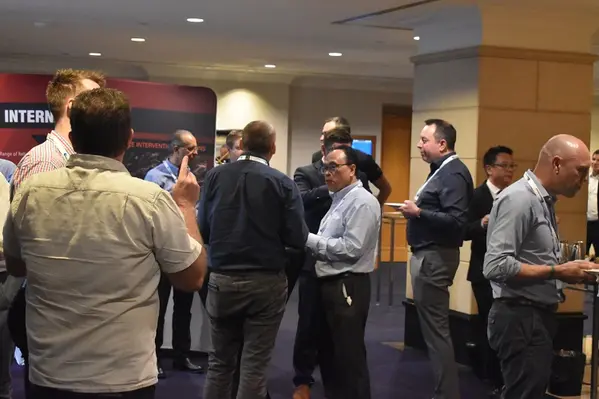
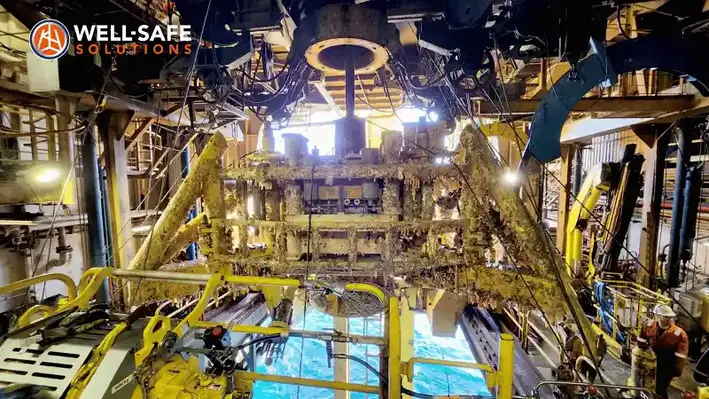
 Well-Safe Solutions, a global P&A company, has agreed a global master agreement with bp wherein the decommissioning specialist will provide the operator with project management, well engineering, engineering design and well decommissioning services.
Well-Safe Solutions, a global P&A company, has agreed a global master agreement with bp wherein the decommissioning specialist will provide the operator with project management, well engineering, engineering design and well decommissioning services.
The agreement will last until at least September 2026, with two one-year contract extension options available.
Matt Jenkins, Chief Operating Office at Well-Safe Solutions, said, “Following on from our work with bp decommissioning wells in the North Sea’s Kate field earlier in the year, we are delighted to have been awarded this agreement. This multi-year contract will see us deploy our Well Decommissioning Delivery Process (WDDP), which guides operators through the well plug and abandonment process efficiently and safely.
“Our commitment to safe, smart and efficient decommissioning well enable us to deliver bespoke solutions tailored to bp’s well stock, including the possibility of utilising the Well-Safe Guardian, Well-Safe Protector or Well-Safe Defender plug and abandonment rigs.”
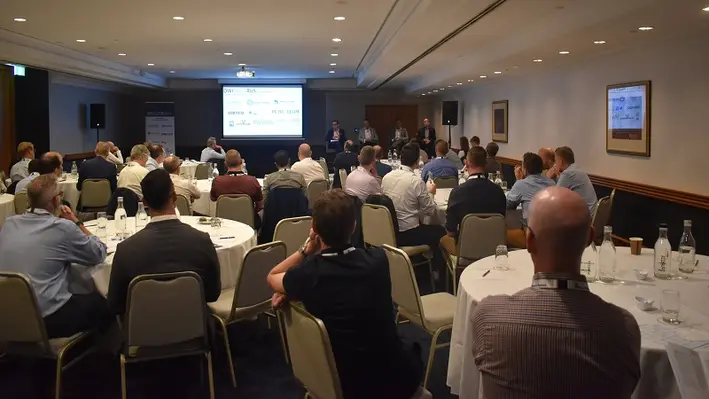

At the recently concluded Offshore Well Intervention Australia 2023 conference held in Perth, a panel of industry experts convened to explore the outlook for the CCS market in Australia.
Together, they considered the ambitious goal of significant emissions reduction by 2030 and how the industry can overcome the time constraints by implementing CCS projects, what opportunities exist or could be put in place to facilitate industry stakeholder collaboration, and how can the industry share knowledge to accelerate CCS adoption and address common challenges effectively.
In the session, Diego Vazquez Anzola, CCS Specialist at APES Energy Evolution, explained, “Acceleration can indeed benefit from industrial and governmental collaboration. Collaboration is important and necessary, but it is not indispensable.
“There are those who point at regulations, or sometimes the lack of them, as the reason for the slow progress of CCS projects in Australia. Australia has the opportunity to not reinvent the wheel and analyse closely the history of other successful projects in other jurisdictions. The few successful commercial scale CCS projects around the world, in or nearing execution, were matured in various timeframes. However, those projects with the most compressed maturation timelines have common denominators, which, contrary to the general belief, are not particularly technical.
“The acceleration of CCS projects around the world has been attained by prioritising simplicity in storage development planning, with phased and calculated strategies for growth and scalability. Furthermore, acceleration has been truly attained by having first a clear understanding of the value generating models, with clear strategies on revenue generation and maximisation. This is indispensable.
“It is when commercial models are clear that industrial collaborations thrive – with a solid strategy towards job creation and workforce re-skilling and with regulators incentivising an environment of knowledge sharing and communication that naturally results in simpler and more streamlined approval processes.
“In summary, industrial and governmental collaboration and knowledge sharing would indeed be beneficial for acceleration. However, commercial clarity is what enables true collaboration towards acceleration.”
Adding his voice here, Jason McKenna, CCS Strategic Advisor at CO2Tech/CO2CRC, commented, “If I had to choose one word to describe the goal of achieving significant GHG emissions reductions by 2030, it would be ‘challenging’. In Australia, the LNG and gas industries are likely to be the first movers as the capture component is already built in to the CCS value chain. The rate limiting step for significant emissions reductions is likely to be the development of cost-effective large-scale capture technologies for the hard-to-abate sectors. In terms of storage, depleted fields may offer reduced project development timelines in comparison to green-field saline aquifers by avoiding the need for lengthy appraisal programmes and the possible re-use of existing infrastructure.
“Currently, there seems to be more of a competitive rather than a collaborative environment amongst the oil and gas companies in terms of access to geological storage. There is the possibility for the Australian CO2 storage capacity to be ‘over-subscribed’ at the moment due to the number of gazetted GHG permits. It would be disappointing to see a number of individual small-scale CCS developments fail the commerciality test (i.e $/tonne) to the detriment of more commercially efficient hub-scale collaborative CCS developments.
“Another area of collaboration to facilitate timely project development timelines is early and regular engagement with stakeholders, particularly NOPTA and NOPSEMA. CCS is an emerging industry globally and regulators will likely have more confidence to provide timely project approvals if they feel informed and engaged at key project milestones.”
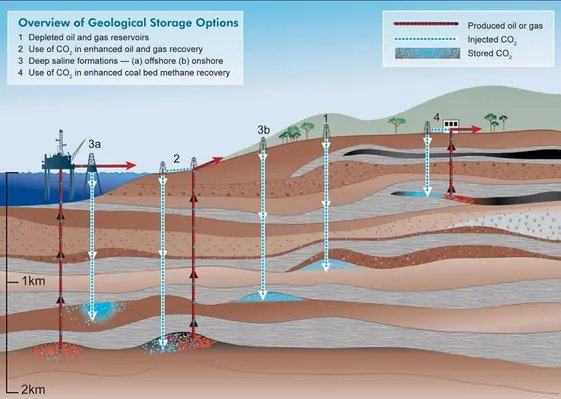
Ageing Wells for CO2 Storage
On exploring the advantages and disadvantages of repurposing ageing wells for CO2 storage, Vazquez Anzola continued, “It is well known that engineers prefer to build from scratch rather than modify existing tools, machines or gadgets. Well engineers around the world concur that newly built wells result in the most effective and safest designs.
“On the other hand, general perception dictates that reutilising infrastructure, including aged oil and gas wells, is the simplest and the most cost efficient solution for CO2 storage development plans that can be matured in the shortest time frame. This is not always the case, and it is rarely the case for scalable CO2 storage hubs.
“Although injecting CO2 in depleted fields is a valid option for commercial scale CCS projects, especially in early phases for CO2 storage hubs, this does not come without technical challenges and can result in extremely complex and/or expensive solutions.
“Traditional oil and gas professionals need to soon understand the concept of ‘permanent storage’ when commerciality of CCS projects is directly dependent on demonstrating to authorities, regulators, shareholders, and the market in general, that every molecule that has been injected is expected to remain sequestered for centuries. A small percentage of leakage after 100 or 200 years or more is considered acceptable in various jurisdictions. The general expectation is that by then, CO2 sequestration would not be as necessary to tackle global warming as it is today.
“As a consequence of these radically different timeframes, risks of loss of containment and mitigation plans embedded in the much needed Measure, Monitoring and Verification (MMV) plans of any CO2 storage project directly affect the design and material selection of future P&A campaigns, as well as all steps required for transforming other infrastructure for CO2 manipulation, conditioning and transportation.
“In a nutshell, initial scale and future scalability of the future CO2 storage hub determines whether or not depleted fields are suitable options. Long term containment risks need to be managed in a cost-efficient but also pragmatic fashion founded on a thorough understanding of these containment risks, their likelihood and their consequence severity.
“However, even when legacy wells are not re-used as CO2 injectors or monitors, they may need to be abandoned more adequately as they will eventually be exposed to the CO2 pressure and/or saturation plumes. The challenge reaches its peak when some of the riskiest legacy wells abandoned years ago following traditional O&G standards, might not even be accessible for adequate re-abandonment. Costs but most importantly containment risks determine whether or not a specific storage site is adequate to the required CO2 injection scale. This is of particular importance in depleted fields.
Picking up this thread, McKenna added, “The perceived advantages of using legacy petroleum wells (and legacy petroleum facilities for that matter) are reduced project timelines and reduced cost (CAPEX). However, this perception may be a false economy as retrofitting a brownfield development may not deliver on these perceived benefits and may pose increased safety risk. Furthermore, the operational efficiency (up-time) and OPEX costs (well interventions and facility maintenance) for brownfield developments may offset and negate any commercial benefit over a greenfield CCS development. There is the added risk of extended monitoring periods post-injection to achieve site closure and relinquish liability for the storage site. A key technical risk I foresee for legacy wells is related to the thermal shock the wells may experience from Joules-Thomsen cooling effects when high pressure CO2 is injected into pressure depleted reservoirs or when a CO2 injection well is shut-in and there is a pressure drop in wellbore.
“There also seems to be somewhat of a double standard developing between greenfield versus brownfield CCS developments. Well designs for greenfield developments are generally being built with several layers of redundancy to ensure well integrity over geological time. In contrast, well integrity issues related to legacy wells which were designed for a completely different purpose may be seen through ‘rose coloured’ glasses by some operators.”
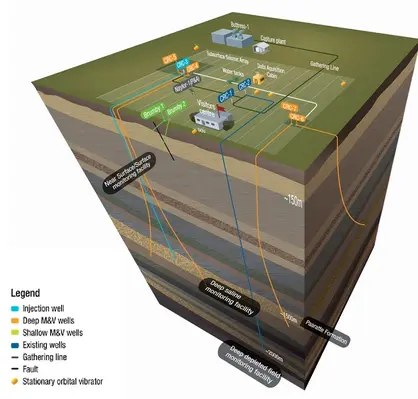
Regulatory and environmental pressures
Across all the issues discussed at OWI AUS, a common thread throughout was the impact of regulatory and environmental pressures and this held true when it came to CCS. On reaching this topic, the panellists sought to understand how these were reshaping and influencing the CCS landscape and what strategies operators can adopt to proactively address the concerns in their future campaigns.
Providing his perspective here, Vazquez Anzola noted, “Communication is key. The operator should provide the regulator with a holistic perspective of how their CCS projects would not only help their own decarbonisation plans, but also how they fit into a deeper and wider plan that not only results in net-zero or even negative emissions, but is directly linked to value generating models that would positively impact the community.
“A key role of the regulator is to ensure that no industrial activity causes irreversible harm to natural resources, flora and fauna as well as human life.
“When the operator genuinely seeks guidance from the regulator to enable a project that visibly generates value (and revenue) for everybody, all pieces start falling into place and true collaboration enables quality projects adhering to the highest safety and environmental standards.”
Continuing the discussion, McKenna added, “With respect to NOPTA approvals, there is an additional approval required for CCS projects in comparison to petroleum developments. This relates to approval from the Responsible Commonwealth Minister (RCM) for any Key GHG Operations (ie seismic surveys, geotechnical surveys and drilling wells). The guidance provided for these approvals is three months for NOPTA review and one month for RCM approval. If the GHG activity overlaps an existing petroleum title, the GHG Operator is required to demonstrate there will not be a ‘A Significant Risk Of A Significant Adverse Impact’ (SROASAI) on a discovered or undiscovered petroleum resource or an associated increase in costs to develop the resource.
“To facilitate timely approval of a Key GHG Operation, it is preferable for the overlapping petroleum titleholder to agree in writing that there is no significant risk posed by the GHG activity. However, if such agreement cannot be achieved, the RCM can form an independent view of the SROASAI assessment. This additional approval and the requirement to engage with overlapping titleholders has the potential to increase project development timelines. There is also the possibility that CCS proponents may have to declare force majeure if they cannot obtain RCM approval to undertake the activities related to their permit commitments. The unfamiliarity of the regulator to approve a Declaration Of Identified Storage Formation (DISF) and subsequent Injection License may increase uncertainty in project timelines for early adopters of CCS technology.
“Brownfield developments may suffer from project delays related to achieving approval of safety cases to from NOPSEMA to re-use legacy petroleum infrastructure. In terms of environmental approvals, the recent litigation against NOPSEMA approvals for petroleum activities poses similar risk for CCS activities. Furthermore, the CCS industry may be seen by activists as extending the life of the fossil fuel industry.
“I agree with Diego that communication is pivotal. A strategy of early and regular engagement with stakeholders who have high interest and high influence is Stakeholder Management 101. Education will also be a key enabler for the public acceptance of CCS technology.”
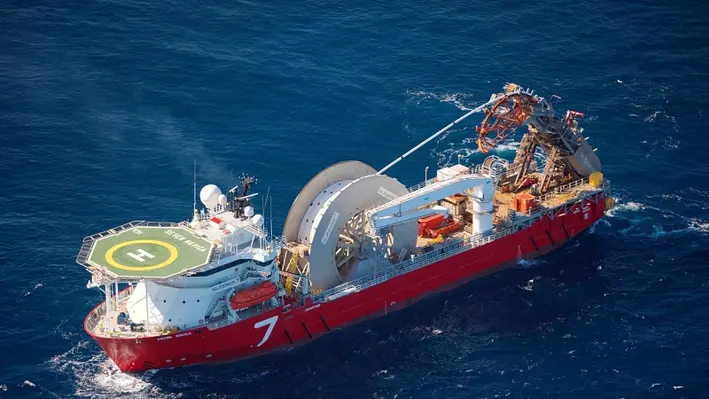

Shell has awarded a sizeable contract to Subsea7, a subsea engineering, construction and services company serving the offshore energy industry, for the decommissioning of subsea infrastructure offshore Brazil.
The infrastructure in question is that associated with the FPSO Fluminense in the Bijupirá and Salema fields of the Campos Basin, at 700 m water depth.
Yann Cottart, Subsea7 Brazil Vice-President, remarked, “Twenty years ago, Subsea7 installed the flexibles and umbilicals for Shell’s Bijupirá and Salema fields and, two decades later, we’re proud to be one of Shell’s chosen contractors to take part in the completion of this field’s life cycle.”
The scope of work for Subsea7 includes the disconnection, recovery and disposal of 10 flexible risers, three umbilicals and nine mooring lines.
The works in question are expected to get underway in December 2023.
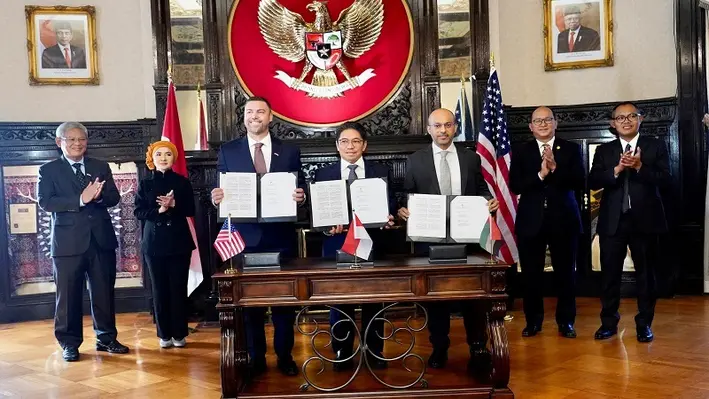
 PT Pertamina Geothermal Energy (PGE) has announced its cooperation with Chevron New Energies International (Chevron) and Mubadala Energy to embark on a Joint Study Agreement (JSA) to explore the geothermal potential in Indonesia.
PT Pertamina Geothermal Energy (PGE) has announced its cooperation with Chevron New Energies International (Chevron) and Mubadala Energy to embark on a Joint Study Agreement (JSA) to explore the geothermal potential in Indonesia.
The JSA aims to capitalise on the companies’ strengths and experience, namely bringing together PGE’s scale as the largest geothermal producing company in Indonesia, Chevron’s expansive capabilities as a multinational energy company committed to providing cleaner energy, and Mubadala Energy’s record in delivering reliable and efficient energy to the region while playing a continuous active role in the energy transition.
The agreement provides a comprehensive framework to conduct a joint study into developing the Kotamobagu Geothermal Working Area (WKP). The agreement falls in line with the Indonesian government’s recent announcement that the region will target an addition of 3.3 GW of installed geothermal capacity by 2030.
President Director of PT Pertamina Geothermal Energy, Julfi Hadi, said, “Our Joint Study Agreement this time aims to utilise the complementary strengths of the three parties in developing geothermal in Kotamobagu.”
Wahyu Budiarto, Chevron Indonesia Country Manager, commented, “This is Chevron’s fifith collaboration with Pertamina and we are excited about the addition of Mubadala Energy in the Kotamobagu WKP. We look forward to bringing into the partnership Chevron’s technical expertise and new geothermal technologies to explore renewable energy resources to support Indonesia’s energy transition goals.”
Mansoor Mohamed Al Hamed, CEO of Mubadala Energy, concluded, “With our track record of delivering strategic energy resources in Indonesia for over a decade, we are excited about this partnership with PGE and Chevron to explore the expansion of geothermal energy, an important segment of Indonesia’s clean energy growth ambitions. The opportunity to explore such projects is embedded in Mubadala Energy’s commitment to playing an active role in the energy transition as we continue to support Indonesia’s Net Zero targets.”


Welltec sees great prospects in the Middle East for its recently launched Welltec Expandable Anchor (WEA).
The Welltec Expandable Anchor (WEA) was a key focus at the company’s stand at ADIPEC 2023, where Completion, Intervention, and New Energy & Climate Technology solutions were showcased, all with optimisation and efficiency as core design principles.
Engineered and rigorously tested over the past couple of years, the WEA is a 4-in-1 life-of-well completion system for anchoring in cased hole. Firmly rooted in proven metal expandable packer technology, it provides industry-leading reliability, efficiency, and flexibility, as explained by Kevin Wood, Sales Director for Completions in the Middle East.
“The WEA has three key benefits. It is reliable, with essentially no moving parts; it’s basically a metal expandable sleeve that is secured onto a casing. It is efficient, as it is slimline and full bore, so operators can circulate fluids or cement at high rates compared to other products. It can also be rotated when run in hole making for efficient installation in deviated and challenging wells. And it is flexible; one particular size of WEA can cover multiple casing grades and we can also add or take away modular parts, depending on the environment in the well.”
The product is available in a full range of sizes, with key completion applications as a liner hanger, tieback liner, inner-string packer, and casedhole plug. All versions of the product are qualified to the API 19LH V1 standard and are fully compatible with Welltec’s Metal Expandable Packer (MEP) portfolio.
The WEA clearly addresses a market need, as illustrated by several installations taking place immediately after qualification, with a requirement from one Middle East operator for product delivery within eight weeks. Facilitated by its in-house design and manufacturing capabilities, Welltec was able to deliver the solution in seven weeks.
Prospects in the region are very encouraging, Wood said, “ADIPEC has been big for us; we signed a two-year call-off contract with ADNOC Onshore for the WEA technology which can address several of the challenges they face on some wells.
“The products covered under the call-off agreement are for the prevention of sustained casing pressure – this is annular casing pressure that can makes its way back to surface, a challenge which has cost the industry around US$75bn since 2009,” he continued. “Around 35% of wells globally exhibit gas pressure in the annulus, and the only way to deal with that is to flare it off, or vent it off, both of which are harmful to the environment. That’s where this anchor and our technology come in. It’s a life-of-well solution, providing a barrier in the well. It’s important that when a well comes to the end of its life, it is decommissioned correctly. The problem with cement is that over the life of the well it expands and contracts, which creates leaks through the cement. Using the Welltec Annular Barrier, which the anchor is incorporated with, gives you a fully qualified barrier that you can abandon above, thereby future-proofing the well for abandonment.”
This in effect helps reduce emissions. The emissions reduction angle certainly chimes with ADIPEC’s central theme of decarbonisation. Wood stressed the company’s commitment to the energy transition, which is “in our DNA – it’s not just a buzzword for us”. He explained that Welltec is playing a key role in Project Greensand, which involves the long-term storage of CO2 by injecting it into depleted reservoirs in Denmark. To support this, and similar projects, Welltec’s New Energy & Climate Technology segment has already constructed an advanced testing facility in Denmark that enables full-scale downhole components to be tested against real-world CO2 well-type environments including high pressures, temperatures, and flow rates.
“The test loop and background to Project Greensand have opened up a lot of conversations here, especially with COP28 coming up,” he said.
Elsewhere in the Middle East, Welltec is active in Qatar and Saudi Arabia, the latter of which provides a manufacturing hub supporting regional activity, and keeping lead times to a minimum. Wood commented that this has been a “huge success”, and expansion of the hub is on the cards. “We can not only deliver quickly compared to our peers, we can also manufacture in the region.”
As far as future product development goes, Welltec has a couple of technologies in the field-trial phase. One is the Isealate Springblade Patch, a unique relining and repair solution for downhole applications. The first in-field deployment successfully took place in Europe in October.
“We also provide a service that can radially expand an existing casing string: the Saturn Expander. This can be utilised in wells where there is casing pressure,” said Wood.
“It expands the casing, compresses the cement on the outside, and cures any microannuli or leaks you might have.
“These solutions are coming to fruition now, and there is a lot of interest in the region, particularly given that many wells here suffer from casing pressure.”
Page 55 of 111